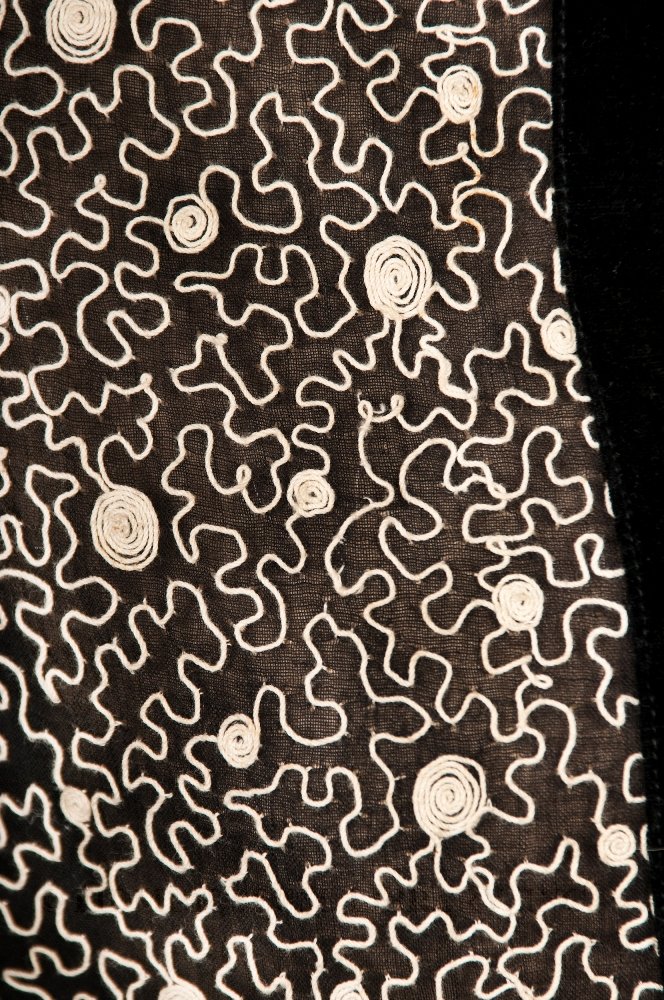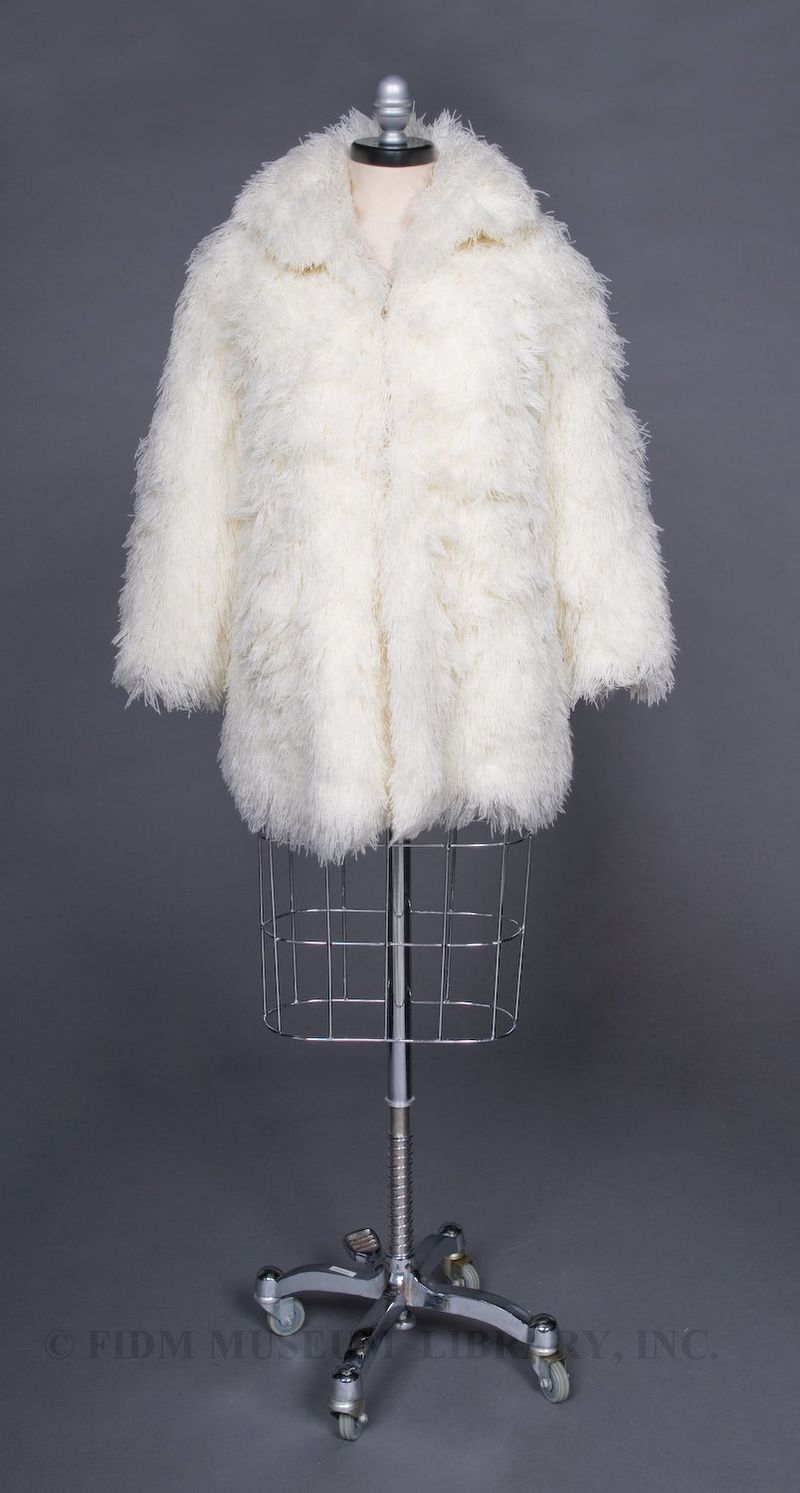Texture in fashion
Color and pattern are usually the first aspects of a garment to catch the eye, closely followed by silhouette. But what about texture? Though texture might not be the first thing we notice, it plays an important role in establishing the mood of a garment. Would a roughly woven cotton textile be appropriate for a glamorous evening gown? Maybe, but it would take a talented designer to offset the rustic, outdoorsy mood of the textile and craft it into a glamorous evening ensemble. A smooth and glossy silk textile would seem equally out of place on a weekend camping trip. Like colors and silhouettes, textures go in and out of fashion. Slippery, synthetic textures dominated the late 1970s, while starched cottons and stiff silks were popular in 1950s fashions. Do popular textile textures affect the spirit and culture of the era in which they are popular? Though it's impossible to directly pinpoint this relationship, it's certainly an intriguing train of thought. With that in mind, take a look at this selection of different textile textures from the FIDM Museum!
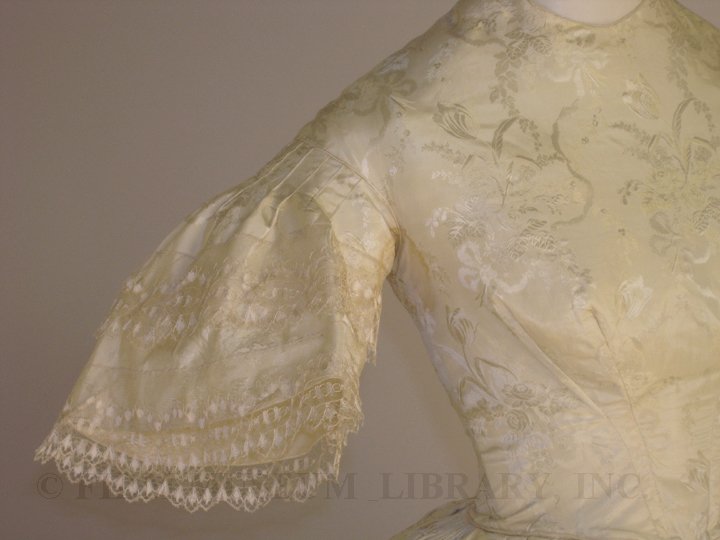 Evening or wedding gown (bodice detail) 1852-54 Gift of the Helen Larson Estate 2001.31.6
Evening or wedding gown (bodice detail) 1852-54 Gift of the Helen Larson Estate 2001.31.6
The subtle tone-on-tone pattern of this cream silk gown features brocaded tulips, roses and ribbons. Because the pattern is woven into the textile, not printed on the surface, the texture varies. The textures reflect light differently, causing portions of the pattern to shine while other areas remain matte. The delicacy of the textile pattern is accentuated by the blonde lace trim on the short bell sleeves.
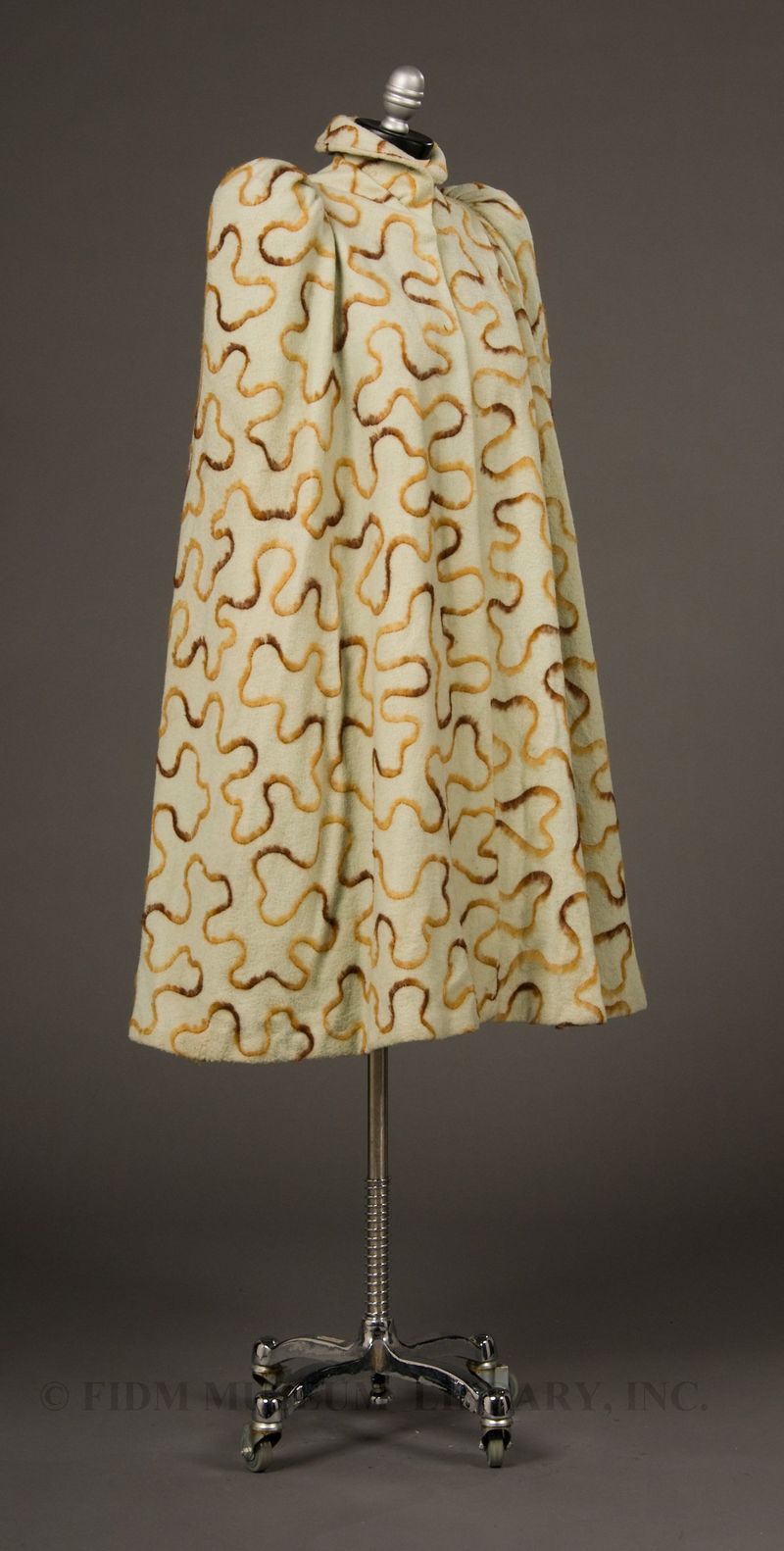 Cape c. 1893 Gift of the Manlove Family 2006.870.4
Cape c. 1893 Gift of the Manlove Family 2006.870.4
The meandering pattern of tufted brown wool is actually three-dimensional. It was probably intended to resemble the look and texture of fur, as in this man's nightgown from the early nineteenth century.
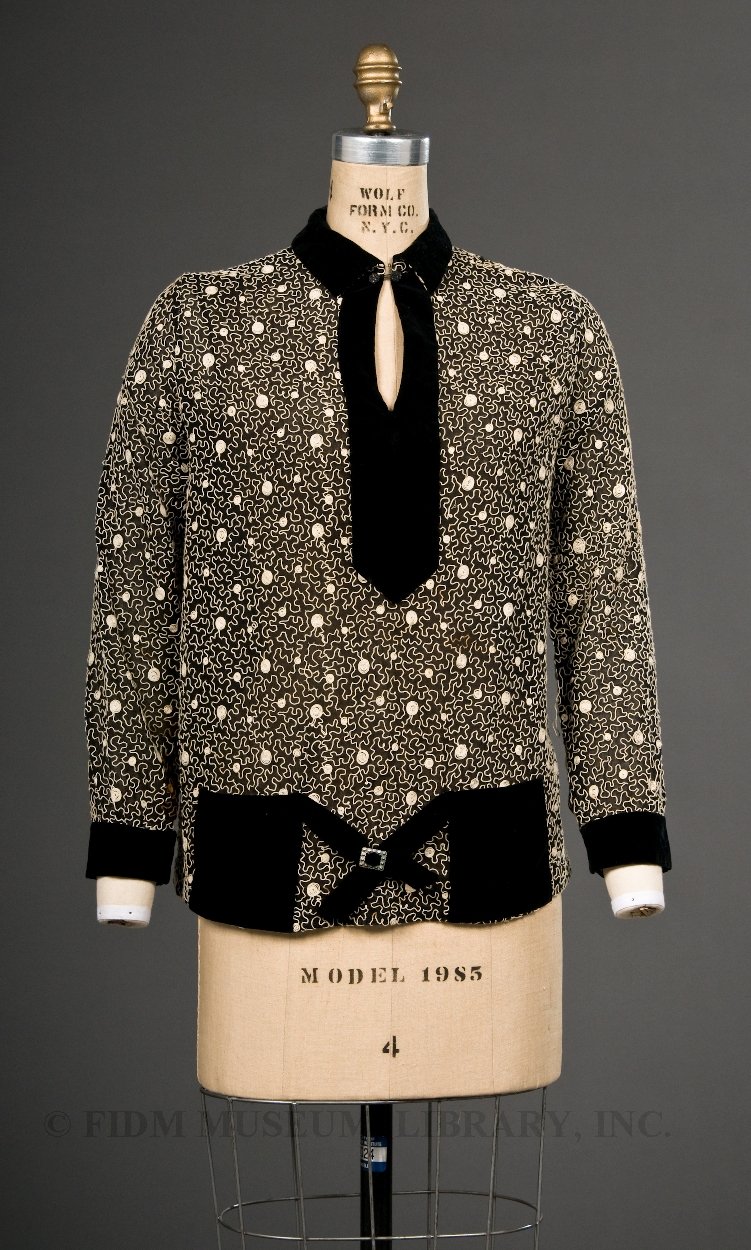 Blouse c. 1925-27 Gift of the Manlove Family 2006.870.17
Blouse c. 1925-27 Gift of the Manlove Family 2006.870.17
The squiggly white lines and concentric circles are couched wool embroidery. In couched embroidery, a thread is laid on the base fabric (cotton gauze was used here) and fastened in place with small stitches. You can just see the tiny couching stitches in the detail photo below. The smooth texture of the velvet trim at the collar, cuff and center front pockets contrasts with the rough texture of the embroidered portions of the blouse.
The dense texture on the skirt of this Arnold Scassi evening dress was created with layers of embellishment. The brown silk satin base fabric is covered with vertical stripes of knotted orange velvet ribbon. The ribbon itself was embellished with beads and metallic rectangles.
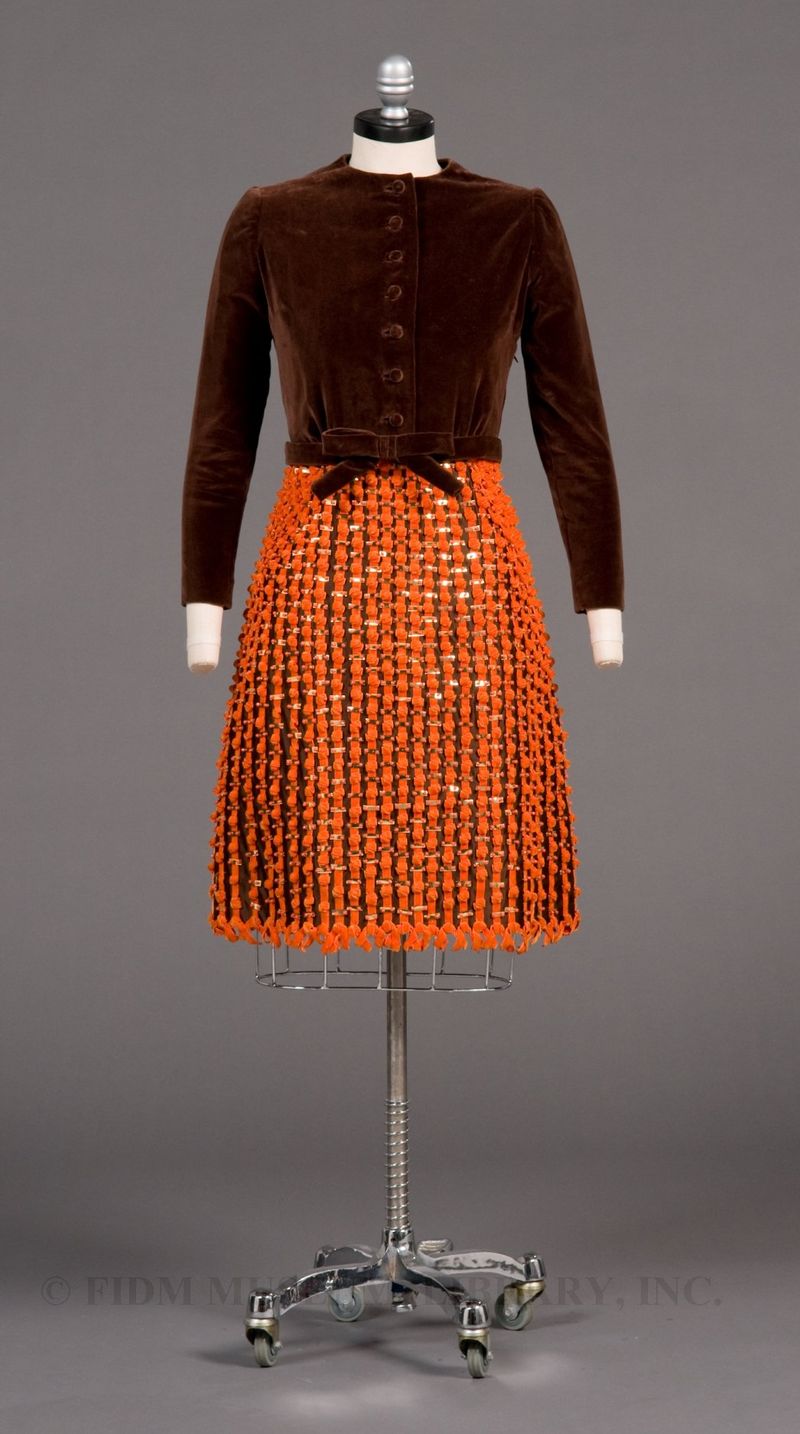 Evening dress Arnold Scassi 1965-67 Gift of Mrs. Justin Dart 81.218.1AB
Evening dress Arnold Scassi 1965-67 Gift of Mrs. Justin Dart 81.218.1AB
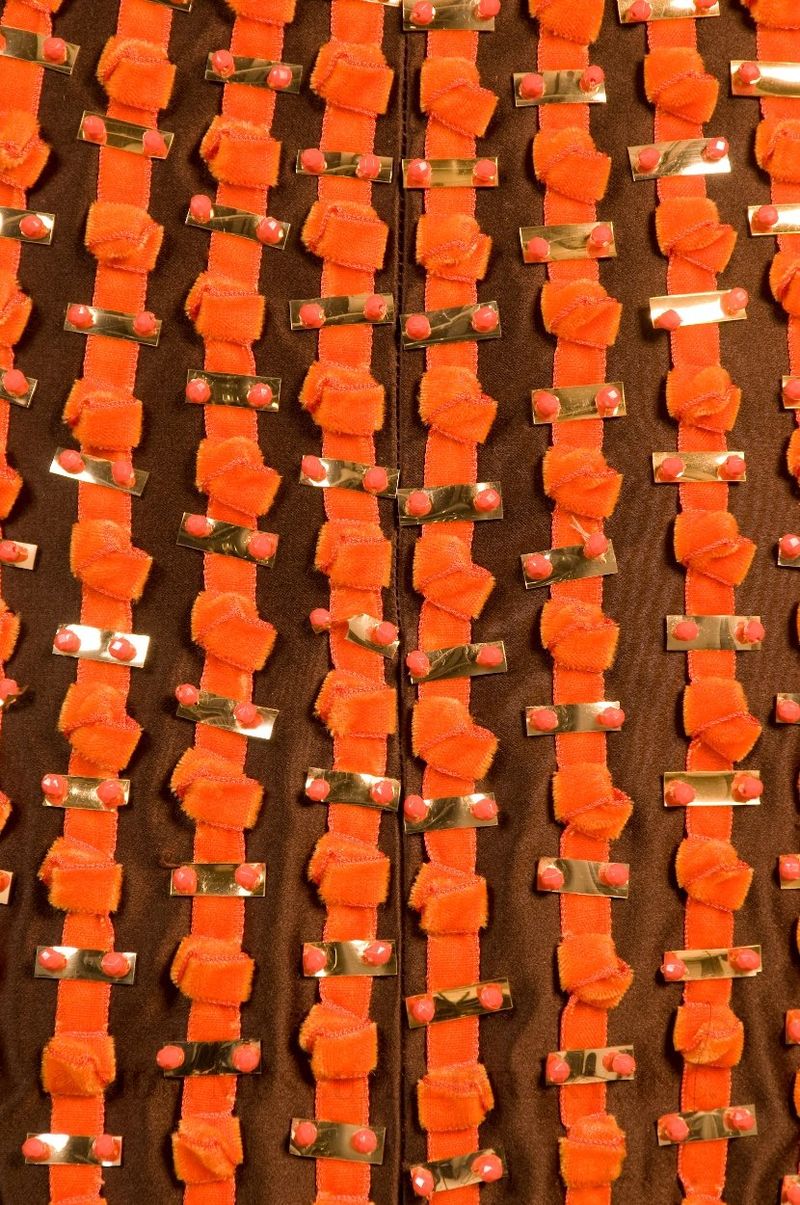 81.218.1AB White acrylic yarn creates the shaggy texture of this boxy jacket. The acrylic shag mimics the appearance of fur, marabou feathers and fake fur.
81.218.1AB White acrylic yarn creates the shaggy texture of this boxy jacket. The acrylic shag mimics the appearance of fur, marabou feathers and fake fur.
